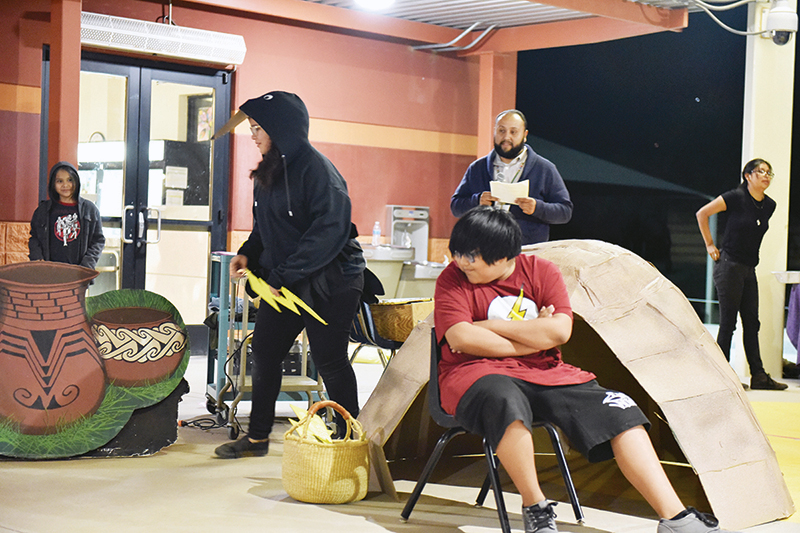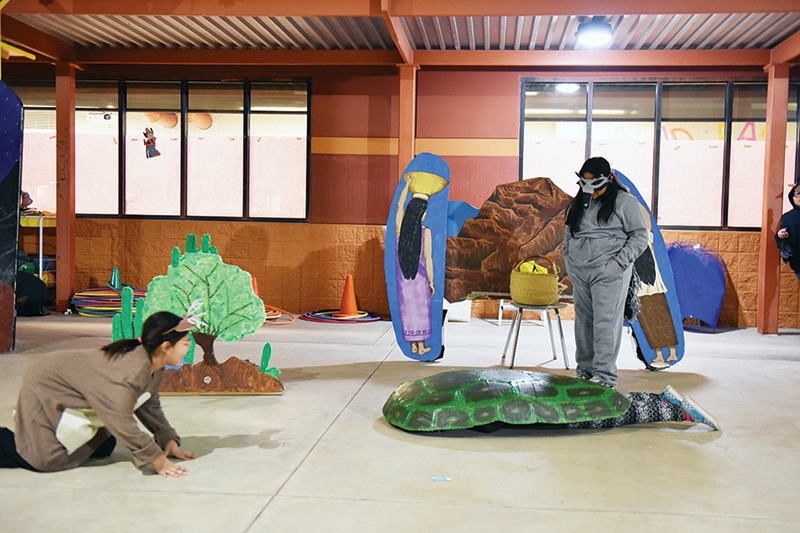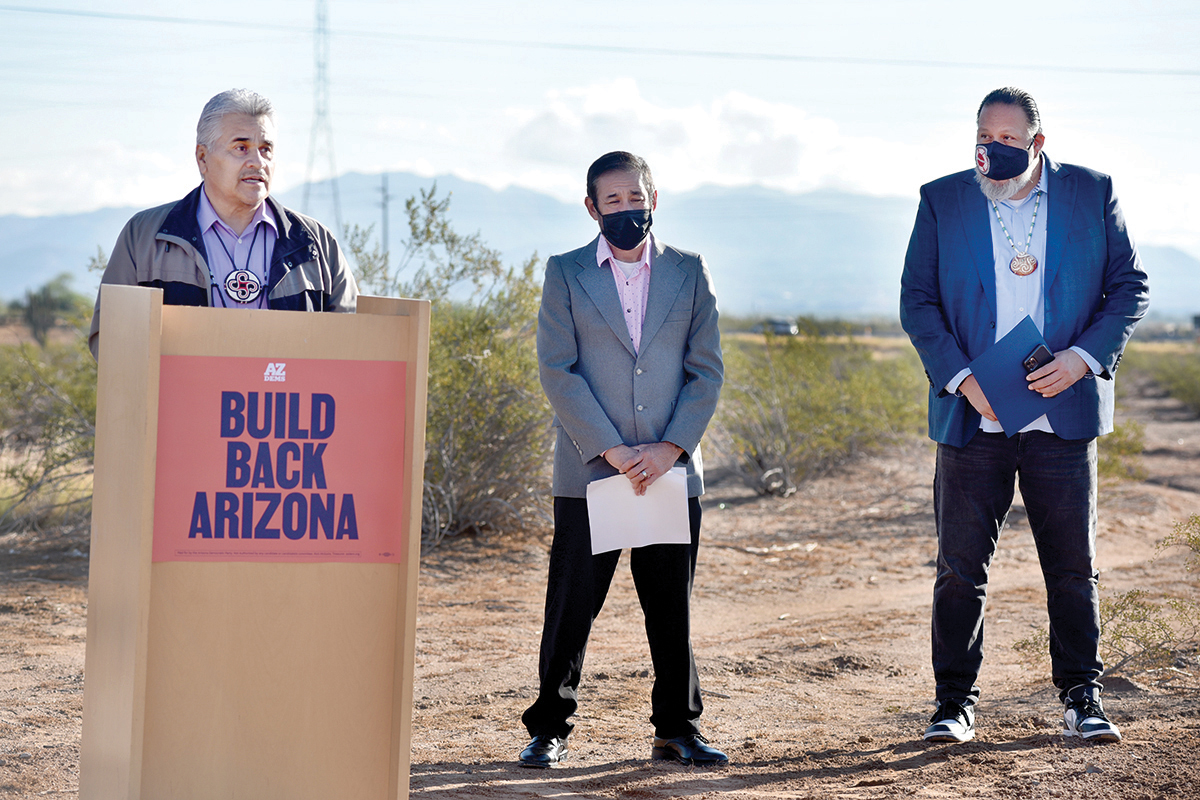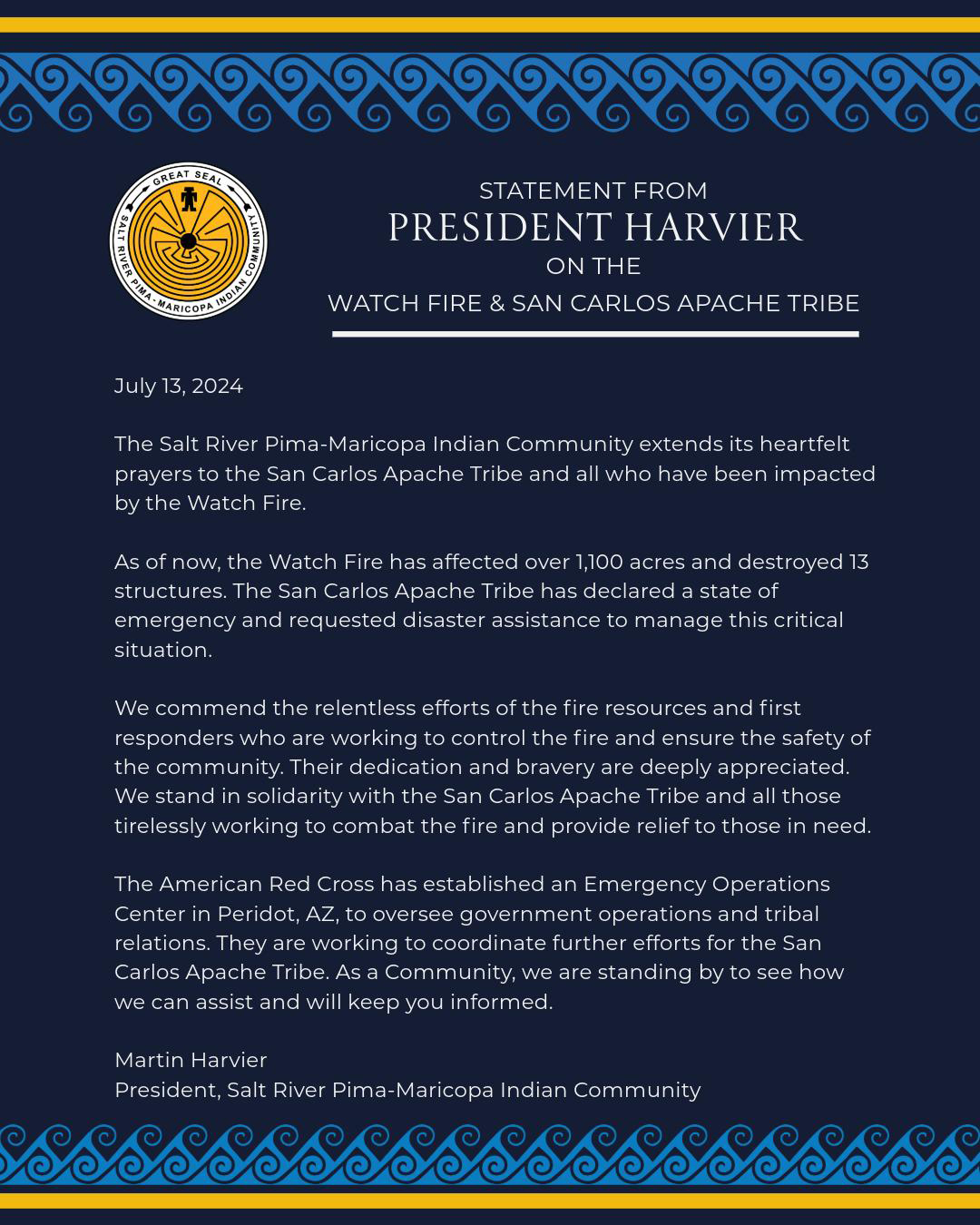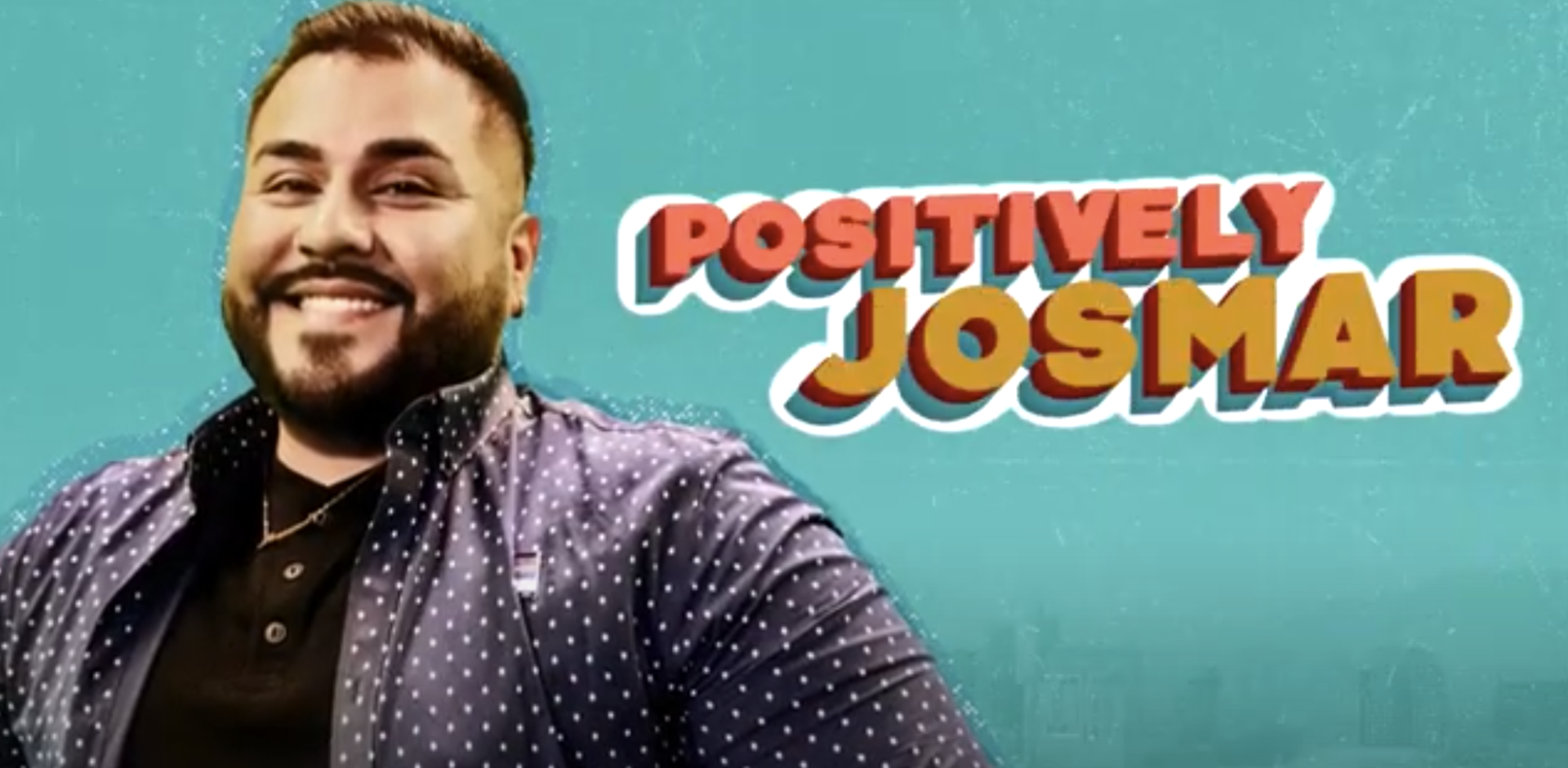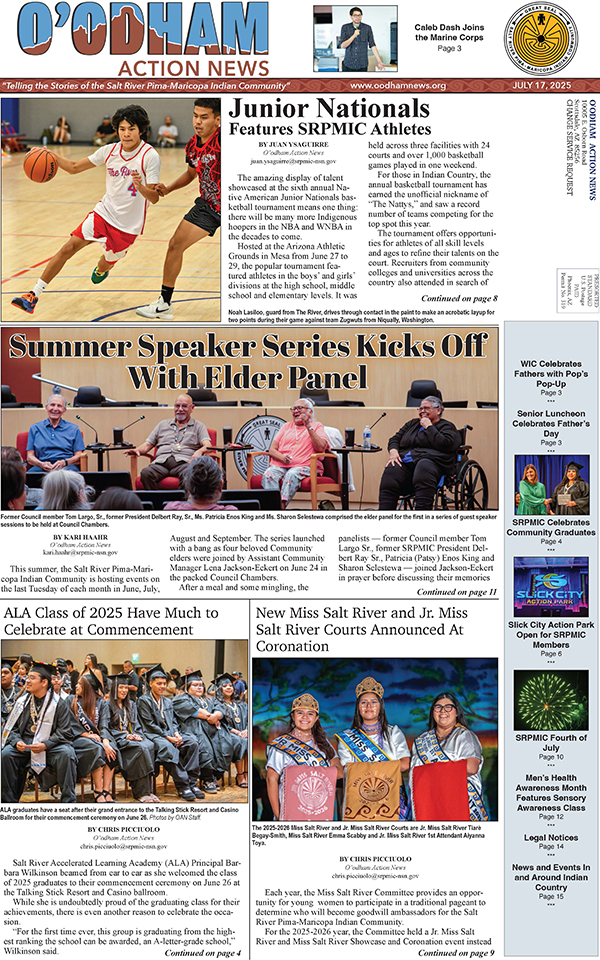VIEWS: 1872
February 27, 2020Elementary Students Tell Stories Through Performing Arts
On Wednesday, January 15, Salt River Elementary School held its O’odham and Piipaash Story Telling Night for the entire Salt River Pima-Maricopa Indian Community including students, Salt River Schools staff and families. This event took place in the school courtyard and was presented by the Education Native Language Culture (ENLC) Team for a night of storytelling, learning and celebrating.
This year’s event had a bit of a twist: Instead of having one person sit down and tell a story, the ENLC decided to have the youth act out two O’odham stories and two Piipaash stories through performance.
Students from grades three through six participated in one or more of the four performances. The two O’odham stories told were “Why Bun’s Fur Is the Color of Sand” and “How Animals Got Fire.” The two Piipaash stories were “Stink Bug and the Coyote” and “Kapet and Xalythwe.”
“We had a really big turnout,” said Language Culture Specialist Ipa Dutchover. “We are hoping to do another performance at the high school in the future. The kids really liked it; everyone was really excited, and they keep asking when we will do another storytelling event.”
Dutchover also explained that this was a great way to teach the students about the culture and language of the O’odham and Piipaash and share the stories that have been here with our people for as long as we can remember.
“We just wanted to find a new way to help tell the stories and make it fun,” said Dutchover regarding why ENLC decided to tell the stories as a play.
How Animals Got Fire
This story is about how the desert animals tried to stay warm as winter approached. The animals got the idea of using lightning to help them stay warm. Each animal took turns trying to steal lightning bolts from Lightning; the first animal to try was Ban (Coyote). Ban climbed his way up the mountain to try to get a lightning bolt, but Lightning noticed Ban and struck him with lightning bolts on his tail, which caused his tail to puff up and become very bushy. The next animal who volunteered to head up the mountain to retrieve a lightning bolt was Jackrabbit. As Jackrabbit got hold of a lightning bolt, Lightning saw him and chased him down the mountain, striking him with lightning bolts, causing a fire and burning the tips of Jackrabbit’s ears. When Jackrabbit returned without the lightning bolt, the animals asked Roadrunner to try, because he was the fastest animal of them all. Just like Ban and Jackrabbit, Roadrunner made his way up the mountain to get a lightning bolt while Lightning was sleeping. As Roadrunner grabbed a lightning bolt, he startled Lightning and woke him; Lightning sensed Roadrunner’s presence, so Roadrunner ran and hid. Lightning went back to sleep and Roadrunner ran as fast as he could, once again waking up Lightning. Lightning chased Roadrunner, throwing lightning bolts at him, with one bolt hitting Roadrunner and singeing the feathers on the end of his tail. Another lightning bolt flew close to his face and burned both of his eyes, leaving a read scar. Although Roadrunner was hit, he kept running as fast as he could. He made his way back to the village with the lightning bolt to make a fire so the animals could all stay warm. And this is how Ban got his fluffy tail, how Jackrabbit got his ears burned at the tips, and why Roadrunner’s feathers look the way they do and has a red scar near each eye.
Kapet and Xalythwe
This Piipaash story is about Kapet (Desert Tortoise) and Xalythwe (Coyote), who both lived in the same village a long time ago. Xalythwe was known to be self-centered and sometimes foolish, and Kapet was known as a great hunter. Xalythwe dreamed of matching Kapet’s glory. One day Kapet explained to Xalythwe how he hunts, telling Xalythwe that he goes out and looks for Qwaaq (Deer). When Kapet finds Qwaaq, he buries himself halfway into the ground with just his back exposed and sings a song. Qwaaq darted at Kapet with his antlers, poking and kicking ferociously, but Qwaaq broke his limbs and fell to the ground. As Kapet sang his song, Xalythwe listened and memorized it word for word. Xalythwe wanted to be known as the greatest hunter of the village, so he went out and tried Kapet’s technique, burying himself in the ground with his back exposed and singing the song. Qwaaq charged at him with his antlers, kicking and poking Xalythwe. Qwaaq did not fall helpless to the ground and old Xalythwe laid there battered and bruised. Xalythwe didn’t realize that the song Kapet sang made Qwaaq mad, or that unlike himself, Kapet had a hard shell that protected him against the kicking and poking of Qwaaq’s antlers and hooves. The moral of the story is not to be so quick to think you know it all; always ask questions and be mindful of adults and your teachers. You may think you have heard all they want to teach, but they may have a lot more to tell you, if you stay patient and listen.

